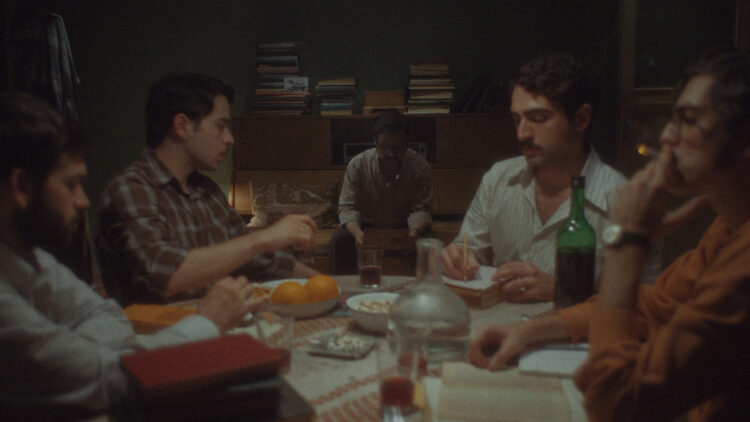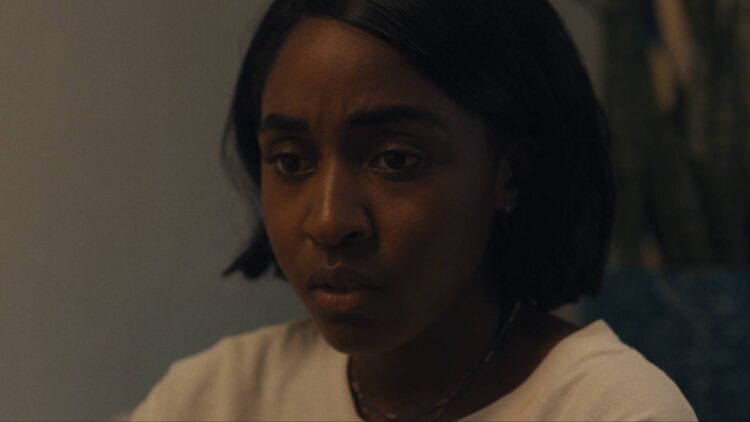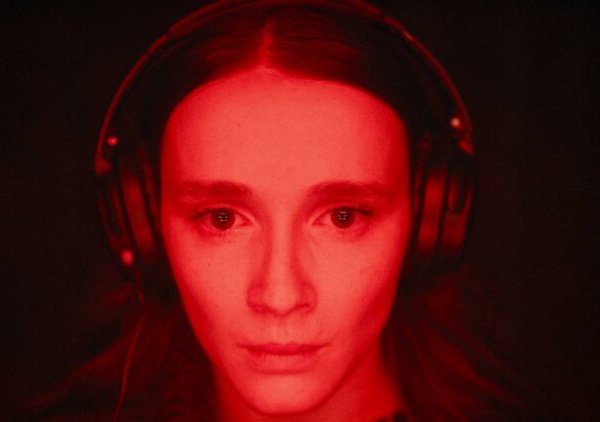

Turkish director Burak Çevik’s fifth feature asks a perennial question (is there politics without violence?) and answers rather grimly, showing how in Turkey, circa the late 1970s (at least), there was no room for non-violent approaches. Nothing in Its Place, shown as part of the Proxima Competition at the Karlovy Vary International Film Festival, is visually impressive, affective, and fittingly bleak in the ways it handles ethical conundrums begetting extremism. The distorted idea of belonging its title alludes to also has a rather utopian streak: if nothing is in its place, then chaos reigns; but chaos, defined against order, can also carve space for freedom.
Order is a concept not only co-opted by fascist regimes everywhere, but also weaponized. The film begins with a close-up of a black-and-white TV screen where a regular broadcast informs the viewer of the (ideologically supervised) news, followed by an ode to said order, marching, hymns, and all that. The Turkish 1980 coup d’état (also known as the September 12 coup d’état) was preceded by years of unrest, replete with violent mass killings, massacres, and the implementation of martial law by the governing fascist regime. Setting the film in 1978 lets the director zoom into micro-histories (a group of five non-violent leftists gathering at night to discuss ideas and their printed publication) and micro-dynamics (between them and members of the far-right Grey Wolves movement) in order to paint a picture of political chaos, tensions, and the persecution that ensues.
Çevik, a Berlinale Forum regular––with The Pillar of Salt (2018), Belonging (2019), and most recently Forms of Forgetting (2023)––puts his ever-probing artistic sensitivity to use in stricter, period-drama terms. In order to ensure the script’s veracity as well as that of the production as a whole, he consulted specialists in modern Turkish political history (Tanıl Bora and Akif Kurtuluş), all the while managing to keep the film open and inviting. A narrative so deeply rooted in national history and a particular historical moment can prove a tough nut to crack, but with Nothing in Its Place, the audience can safely rely on their instincts when relating to the multi-faceted characters.
Themes of twinning, futures, pasts, memories, layers, and constellations of lives permeate Çevik’s work, and while it’s not surprising to see them crop up in his newest film, the shapes they take are. Baris Aygen’s camera slides around corners and presses through walls to follow characters with a one-shot continuity, giving the film a sense of dread and pressing urgency. That night, when the leftists least suspect it, they will be confronted, threatened, and tortured by people who are equally committed to their own cause on the other side of the political spectrum. Doom is inescapable––so is violence––but Nothing in Its Place remains tactful enough to keep a distance and utilize visual focal points that are neither the acts nor the results of violence. In one particular scene, a lamp becomes a pars pro toto of the room, filling up the frame while the brutality remains clearly audible.
Nothing in Its Place was the result of two years of research and interviews; such fieldwork is not only related to character-building, but is also an excavation of memory. Born in 1993, Çevik can only gain access to the ’80s through other people’s stories, archives, and writings. But the film is much more than an exercise exploring second-hand memory; it is a living, breathing object that is not only period-accurate, but looks, smells, and tastes like the 1980s. A stale whiff of the old order combined with the fear and the hope for the future gives the film a paradoxical vitality, even when locked in the vicious cycles of ideological violence nations just can’t seem to break.
Nothing in its Place premiered at the 2024 Karlovy Vary International Film Festival.
The post KVIFF Review: Burak Çevik Explores Turkey’s Political Complexities in Nothing in Its Place first appeared on The Film Stage.



